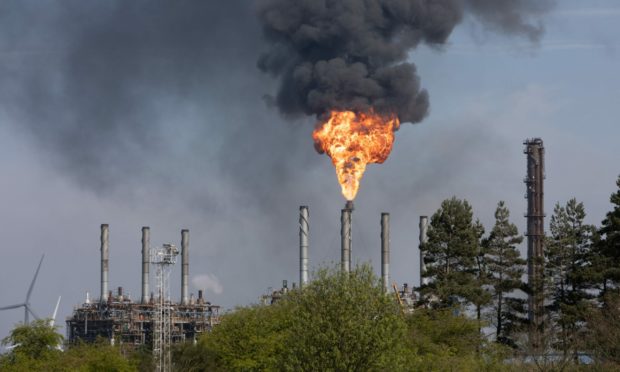Carbon and other greenhouse gas emissions at industrial sites across Scotland fell by 6% in 2020.
Public body Sepa (Scottish Environment Protection Agency) dropped its latest batch of data on pollution last week.
There’s a lot of information in there, including the amount of greenhouse gas emissions from each “Sepa regulated industrial site” in Scotland.
To save you the horror of going through hundreds of lines of information in Excel documents, we picked out each site in Tayside and Fife responsible for carbon dioxide or methane emissions.
There are sites that put out other substances, but we decided to focus on the most harmful greenhouse gases.
What did we find?
The worst polluters appear to be in Fife — especially when it comes to carbon dioxide emissions.
For Methane, it was more evenly spread out across Tayside and Fife, with several in Angus.
Generally, poultry farms and landfill sites were most likely to emit high levels of methane.
Unsurprisingly, large industrial sites such as Markinch Power Station and Mossmorran (which is actually two facilities, Fife Ethylene Plant and Fife NGL Plant, operating in the same site) are responsible for more carbon dioxide.
Understanding the maps
Sepa has a threshold of emissions that, once breached, need to be reported.
For carbon dioxide this is 10,000,000kg and for methane it’s 10,000kg.
That’s for a site’s entire emissions for 2020.
If a site is green on the map, it means they did not meet that threshold and did not have to report their emissions.
Sites in red have emitted more than the reporting threshold. You can see how much they emitted in the map.
The biggest carbon and methane polluters near you
Here’s the information for carbon dioxide:
And here’s the methane results:
What is the picture like across Scotland?
The release of the data was delayed because of a devastating cyber attack on Christmas Eve 2020.
During the first year of the coronavirus pandemic, all greenhouse gas emissions fell by 6% at regulated sites.
This continues a 13-year trend.
Since 2007, there has been a fall of about 60%.
Jo Green is acting chief executive at Sepa.
She said: “The data reflects both the significant progress we’ve made as a nation… and the progress we all still need to make on a just transition, including Scottish business.”










